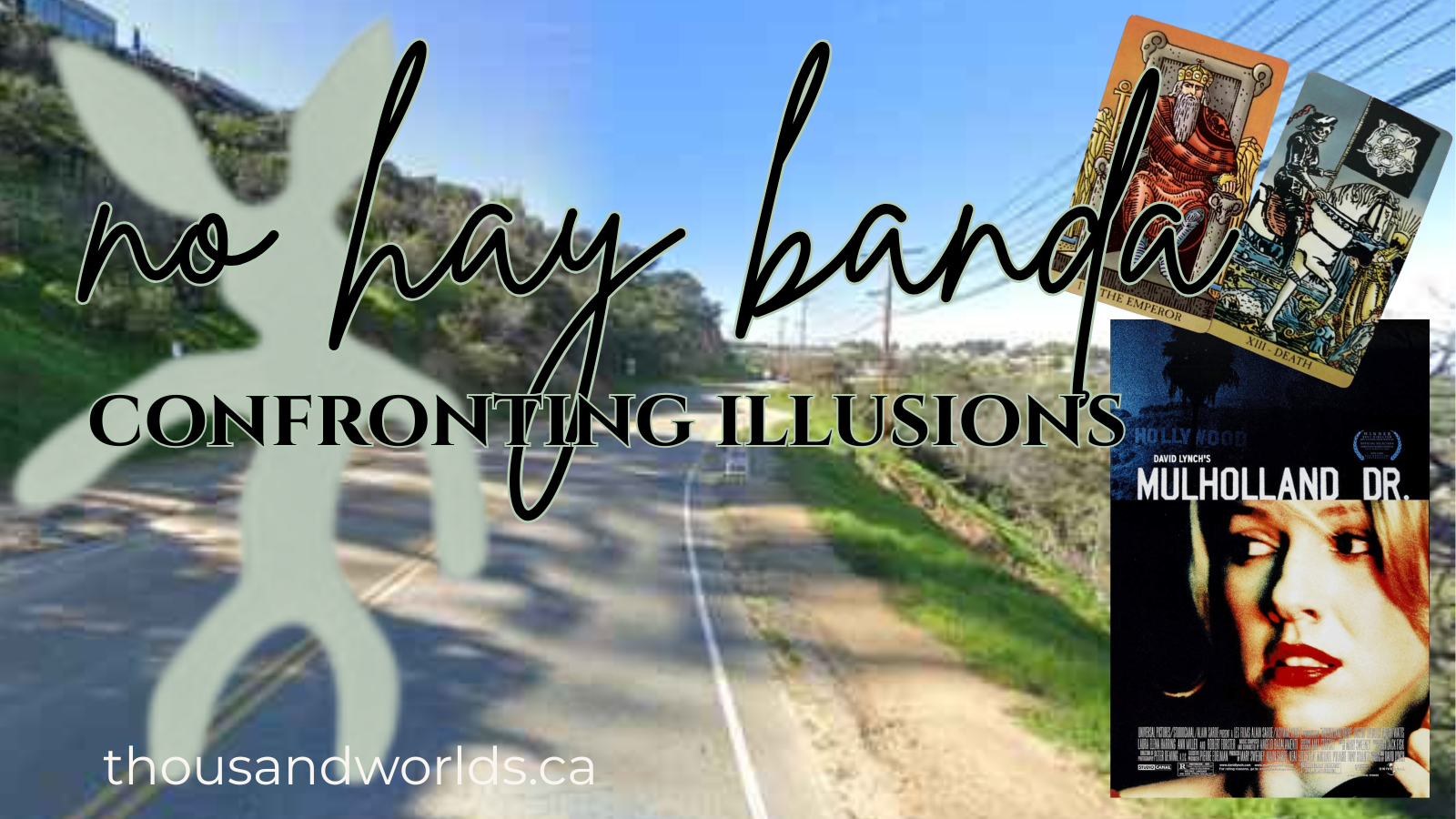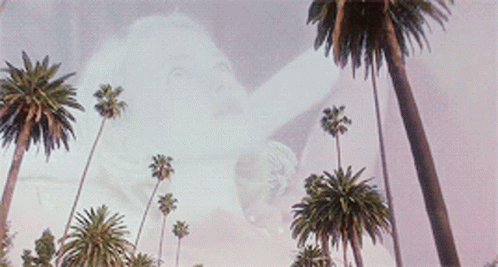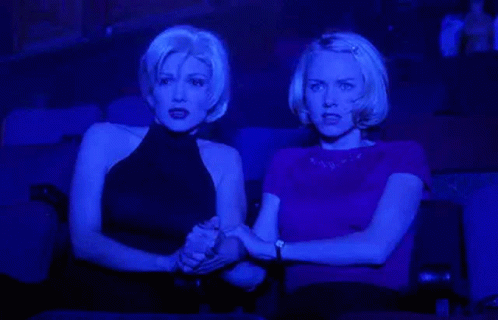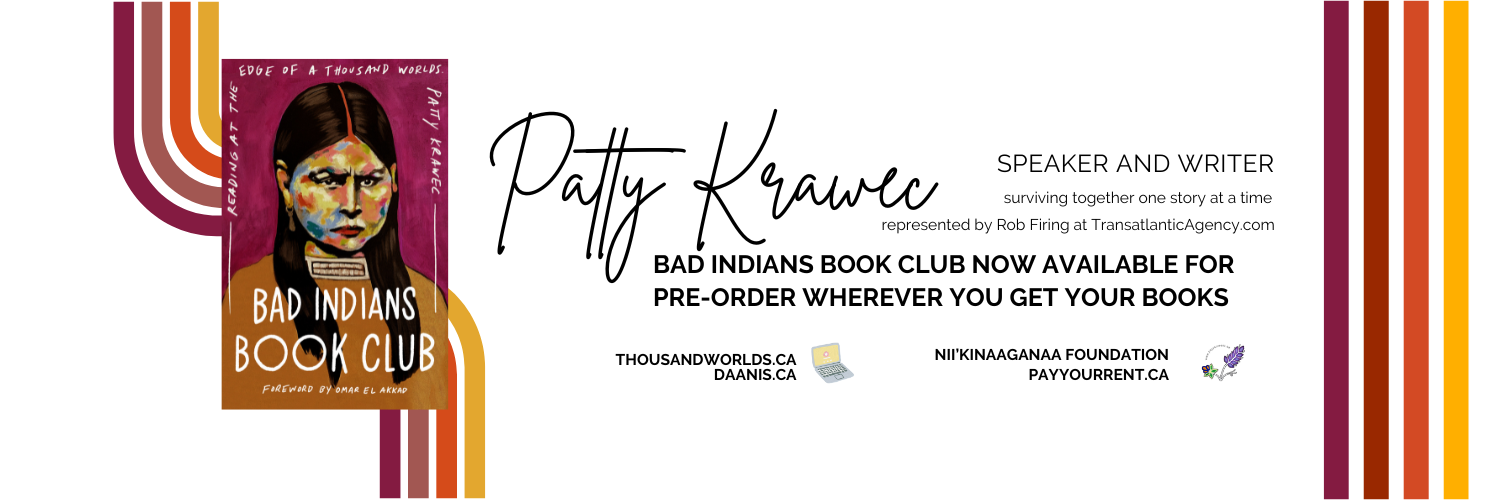No Hay Banda

Today's story is a bit of a bummer. I thought about skipping over it but it is part of a series of stories that ends beautifully and you miss some of the tenderness when you skip over the awful parts. Besides. We are complicated messy people, we should acknowledge the awful and confusing parts not because they provide a kind of map to things we should and shouldn't do but because of how they make us feel about similar themes in our own lives. Kind of like a David Lynch movie.
The Jones archive is arranged in themes because although there are some stories that hang together in a kind of chronology, in general they don't and trying to force them into any kind of chronology is like trying to figure out what Mulholland Drive is about. If you haven't seen Mulholland Drive it's a brilliant movie that I watch regularly. There are two distinct parts along with smaller stories, but no overarching narrative that holds it all together. This is typical of Lynch's work, and can be frustrating if you are looking for a straightforward narrative. He doesn't give you that and neither do these Ojibwe stories. They are invitations to explore our interior worlds more deeply by embracing and exploring ambiguity and the unsettling parts of ourselves. David Lynch does not shy away from revealing the murk normally left in the shadows and neither do Ojibwe stories.
There is no Real and True History of Nanaboozho and the Ojibwe People. Our stories are not so easily contained, and the more I'm immersing myself in these stories the more disarticulated they become. It's just the surface that looks still and calm, the deeper you go the more complex life gets. Like much of David Lynch's work, these stories layer and move around. Isaac Murdoch includes a portion of today's story at the beginning of his recounting of Nenaboozhoo and the Great Flood, while Jones doesn't connect it to the flood at all. Basil Johnson includes parts of it in The Manitous, giving us some additional context early in his chapter on Nana'b'oozoo, placing the story much earlier in Nanaboozho's life when wiin is not quite a child but not yet a man. The stories we're talking about exist in many ways, often reflecting the needs and geography of the community that tells them, and you aren't going to easily cross reference these stories just by looking at their titles or placement in collections of Ojibwe stories.
Before we go further, hello to new members! Paid subscribers help keep the lights on, but everyone can expand my audience by sharing this post through email or on social media.
This week we're considering William Jones' story Nanabushu is made to fast by his grandmother and revenges himself. As always, these are just personal reflections, they are not meant to be seen as an authoritative statement on what these stories mean, as if there was a singular meaning. Which there isn't. I reflect on these stories to put them into conversation with your own, not to try and convert you to the religion of the Anishinaabe.

I'm going to follow Johnston's placement of the story earlier in Nanaboozho's life when Nanaboozho was not quite a child but not exactly a young man either. One of the significant milestones in an Ojibwe person's life is the vision quest, much beloved and deeply misunderstood by Hollywood. Normally this would happen for the first time in childhood, but in our contemporary society it happens for the first time all across the age spectrum. It can happen with great ceremony, and it can happen as it did with my oldest son who was an adult when an elder just dropped him off on a small island and wished him luck saying "see you in three days!" And yes, Ojibwe parents did put their children out to fast which I'm sure was scary at times, being alone in the woods overnight without food or water.
Johnston gives us a lot more backstory, explaining that Nanaboozho was quite young and wanted this desperately until it actually happened. Can I fast now? How about how? Today? Tomorrow? You know how children are. You tell them that you're going to do something soon and they think that means now-ish. Then one day Nokomis tells Nanaboozho that today's the day and wiin has second thoughts. Actually, wiin had plans. Gotta wash my hair, clean out the closet, sort that basket of single socks. All those tasks you never do until you have something you need to postpone. Procrasti-tasks. But Nokomis didn't fall off the moon yesterday and she's wise to this nonsense so out wiin goes.
Nanaboozho stops just outside the gate and she says no, go farther I can still see you. Covers their eyes. Nope. I can still see you. Hides behind a willow. Get going. Eventually Nanaboozho is out there in the woods all alone. Nokimis promises that wiin will be ok and it was a common practice for Ojibwe parents to check on their children, often from a distance, to make sure they were safe.
Back to our story.
Little Nanaboozho doesn't stay in the fasting place all night. Wiin sneaked home and found Nokomis carrying on with her friend, Nanaboozho's grandfather who helped raise wiin. In Johnston's story Nanaboozho assumes that she got rid of wiin so she could have some sexy time and Johnston makes a point of saying that if Nanaboozho had a stake wiin would have gotten it red-hot and killed the old man with it, but Nanaboozho didn't so wiin just hung around all night spying on them before returning to the fasting spot where Nokomis found wiin a few hours later. Nanaboozho tells her all about visions and dreams, none of which were true, and here Johnston gives us more context. Ojibwe children were encouraged to play at this, to have pretend vision quests and pretend visions to get them used to the real thing when it came time. So by doing this, Nanaboozho is staying a child. Wiin is not leveling up, so to speak. We do this don't we, hold ourselves back because we're afraid or distracted. Parents do this too, holding their children back, keeping them children long past all good sense. But growing up happens anyway, and if we don't allow ourselves or our children to grow up it will happen in destructive ways.
In Jones' story Nanaboozho comes back to find Grandma and Grampa getting busy but this time wiin does have a stake, which he gets red hot and then burns his grandfather's backside. No euphemisms for Jones. They were definitely having sex and Nanaboozho caught them so wiin took the red-hot stave and burned gramps right in the butt.
The old man goes running out of the wigwam and Nanaboozho stays with Nokomis. Shaking her head over the terrible prank, she sends wiin to bed without any dinner. Your fast isn't over buddy. The following morning, still hoping for food, Nanaboozho gets sent out to hunt. You can break your fast by eating whatever you catch she says.
Nanaboozho finds grandfather's wigwam and goes to visit him, but with ill intent. Nanaboozho plays another trick, this time pretending that the wigwam is surrounded by enemies and when their grandfather reacts Nanaboozho kills him.
You'll remember from our first story about Nokomis falling from the moon, that Nanaboozho's grandfather is a bear who encouraged her to come up from the bottom of the lake. In Murdoch's telling, when Nanaboozho kills the bear, wiin doesn't know that the bear is wiin's grandfather. Wiin hears sexual noises coming from the wigwam and thinks that somebody was taking advantage of grandma, shoots an arrow which provokes the bear into running away, and then chases it down and kills it. Johnston explains that Nanaboozho did not know that the bear was wiin's grandfather because whenever he came around to help raise Nanaboozho he came in the form of a man. But in Jones' story Nanaboozho seems to know that this is wiin's grandfather and wiin goes farther with this, being cruel to his grandmother by making her dry the bearskin and then cooking and eating the meat.
You're disgusting she tells him. He says oh yeah, you know what's disgusting? You sending me out into the woods so you could have a booty call. I saw what you did. At that, Nokomis became fidgety and silent. Nanaboozho stopped talking and, Jones tell us, she didn't have anything to say to him either.
I told you today's story was a bummer.
Club Silencio is a part of Mulholland Drive subject to a lot of writing and speculation. One of the more interesting suggestions is that it is a kind of doorway to the afterlife, a pulling back of the curtain to reveal all that is fake about our lives and the machinations going on to keep the illusion alive. This is classic Lynch, forcing us to think about our investment in illusions and everything that goes into maintaining them.

Like Club Silencio, in stories Death often operates to reveal truth and destroy the illusions we hold onto which makes me think about tarot where Death is more about change than it is loss of life. You'll remember that Nanaboozho kills one brother, and then another. None of them stay dead. Because death is about change and change needs to happen even if he is being cruel about it, and I'm not here to justify his actions. What he did to his grandmother is indefensible but it's also a story, and stories mean something beyond that smooth surface.
In both Jones and Johnston's telling of this story Nanaboozho is plagued by nightmares and fears of monsters and windigoes, every forest sound becoming amplified and terrifying. I've lived in my current house for more than 20 years, it's near a wetland and a forest and we've heard all kinds of animals from birds carrying on, to coyotes howling, dogs barking, cats brawling. Then one night a few years ago there was something new. It was new and freaky. Took us about two weeks to figure out what it was: foxes. Foxes had returned to the forest around our house and I'll tell you the noise they make is the stuff of nightmares when you don't know what it is.
Just like the Blair Witch. Ngl, I'd run home too
So being scared, alone, and hungry Nanaboozho rushes home only to find their grandmother otherwise occupied. She had not been watching over wiin the way Ojibwe parents are supposed to, or maybe she thought wiin had fallen asleep and would be fine. Either way, it is clear that Nanaboozho felt betrayed. Initially wiin lashes out at the one who was visiting her, you'll recall that Murdoch suggests that Nanaboozho thought wiin's grandmother was being taken advantage of. Neither Jones nor Johnston allow Nanaboozho that possibility. Wiin knew who was there and wiin was mad, possibly jealous. Jones' story extends the horror giving wiin the stave that Johnston states he didn't have along with the subsequent violence and cruelty. Jones then ends the story with them sitting together in morose silence.
This is devastatingly normal isn't it? Sophocles wrote about this thousands of years in the past and thousands of miles to the east in Oedipus Rex. Boys loving their mothers and becoming men by killing their fathers. This is how Nanaboozho grows up, this is wiin's ceremony. Not fasting and vision quests, wiin used violence and cruelty. This is much like the story of wiin's birth isn't it. Instead of a birth surrounded by care, Nanaboozho's mother dies in childbirth and the father is nowhere to be seen. Instead of brothers to grow up with, Nanaboozho develops from a blood clot found and wrapped in bark and then cared for by Nokomis in the midst of her own grief. Wiin's brothers have run, hopped, and rolled away. Is it any wonder that relationships and managing the messiness of them is such a challenge for Nanaboozho?
Perhaps that is the point of these ceremonies, fasting and sweatlodges, sundances and more are a controlled kind of trauma that teaches us how to manage difficulty in the context of a supported network so that we don't have to act it out in other ways. Club Silencio may be, in that sense, a ceremony in which Betty is set free from her illusions. The second half of the movie is not happy though, like our story being set free from our illusions can result in great despair much like Nanaboozho and Nokomis sitting together in disconsolate silence. Silencio.
The song Llorando from Club Silencio. Earlier in this scene (not shown in this video) the MC tells us "no hay banda" There is no band. We hear the music, but there is no band. It is all a recording, an illusion, and the scene ends with Betty and Rita in tears.
I heard a teaching that trauma causes our spirit to break free and travel to the spirit world where it receives teachings that it brings back to us so that we can live well. Perhaps the things that a fasting person sees or feels is part of that travel to spirit world. Ceremonies are meant to take place in the midst of care so that we are not truly harmed, but they are not easy things. Fasting is hard. Being alone in the dark is hard. Nanaboozho's fear was legitimate. There are things in the night that want to eat him. Although not part of this story, the sweatlodge is also hard. I participated in one where the conductor warned us that she runs a hot lodge and does not allow people to leave so if we had any second thoughts we should leave now. Nobody left, and it was extremely hot.
Induced trauma to release our spirit so that it can learn the things it needs to learn is one thing. But what if we don't have that? Absent our ceremonies, how will our spirits be prompted to leave so they can learn the things they need to learn? This is the teaching I received: spirit uses what is available to it.
This is not a victim blamey "what doesn't kill you makes you stronger" teaching because the fact is that a lot of people don't survive their trauma. It is simply a recognition that spirit needs to learn and the universe will make use of whatever is available to it to ensure that spirit is able to get the lessons it needs. Ceremony recalibrates us, gives spirit a pathway out and then calls it back. Trauma outside of ceremony does this too, but the nature of that trauma distorts our ability to learn.
I want to come back to death as change before we close this bummer of a story out, and I'm going to be using Lane Smith's 78 Acts of Liberation: Tarot to Transform Our World because I really like their discussion of it. It can be about death and loss, but more often it reveals what we are clinging to. It asks us to dive deeply into something revealed by other cards to bring hard truths to light.
Death, in Tarot, asks us not to turn away when something painful is exposed, and to accept when something is wrong or outdated and needs to end.
Smith points out that our (mostly white) society is obsessed with avoiding death, with turning away when something is painful and refusing to accept that some things need to end. We do this not only through strategies to prolong life and youthfulness but also by prolonging the afterlife of slavery through the preservation of monuments to Civil War heroes or literary canons that elevate racial hierarchies all of which normalizes the death that stalks certain population groups because those deaths don't matter. We do this by idealing a past that never was and then trying to remake our current world in that false image. Then Smith says this bit which brings us back to our story:
We need Death to be able to stop the abuses of Emperor energy.
Emperor energy?
Grandpa?
Now we have to take a brief look at the Emperor, normally associated with patriarchal authority. From bosses and heads of state to parental figures the Emperor represents a particular kind of authority that can, and often does, tend towards violence. Power is the ability to compel behaviour and that leads inevitably to violence. Death, Lane asserts, acts as a counterpoint to this inevitability. It sets boundaries on coercive control and invites different ways of being in charge.
And if, in this story, Nanaboozho is Death and Gramps is the Emperor, then Nokomis is the Empress. The Empress is about care and nurturing, it is creative and expansive but care can also be a form of control through manipulation and creating dependency so it also needs boundaries set on it. I don't want to go too far into the weeds on this, but it is an interesting lens to view this story isn't it. Nanaboozho's violence as a way of setting the boundaries in order to grow up. The rage that follows a tearing back of the curtain and revealing of illusions. The discovery of no hay banda, and the desolation that follows.
Ceremonies offer a better path for growing up, setting boundaries, and finding our place in the world than the violence of death and the cruelty that follows. Raising our children in a nurturing community offers them a network of relations that helps them understand how to navigate the world, which is one reason why colonial states have so many policies that destroy our communities, make it difficult to raise children who know how to do more than make demands and fall apart when those demands aren't met. And we see the outcome of these policies of displacement in our communities. We see generational patterns of violence and cruelty mirroring the violence and cruelty that was/is done to us by the colonial state, that was/is done by citizens empowered by church and state.
And that's where the story leaves us. Not with a moral wrapped in a tidy bow, not with a teaching we can take with us. Just two people, grandmother and grandson, sitting with the aftermath of something neither of them can fully explain away. There’s just silence. Hurt. Maybe a little shame. Maybe something like regret. But no one says sorry. No one makes it right.
This is why I didn’t want to skip this story, even though it’s hard to sit with. Because it touches something raw and real that doesn’t often get addressed in neat teaching tales. There’s a deep grief in it—a grief that comes from misunderstandings, from generations brushing up against each other with different expectations, from the impossibility of growing up cleanly. Nanaboozho acts out in anger, confusion, maybe betrayal. Nokomis, too, is caught in something—perhaps desire, perhaps exhaustion, perhaps just the deep loneliness of raising a child with powers bigger than either of them knows how to manage.
It’s tempting to try and extract a moral from this story. Something like: “Don’t let your anger turn you into someone you don’t recognize,” or “Sometimes our elders fail us,” or “Grief and growing up are messy.” All of these might be true. But if there’s a teaching here, maybe it’s just this: that some stories are meant to stay unsettled. That there’s value in letting a story echo in the body without trying to resolve it in the mind.
I think about how many of us have sat in that silence—between generations, between intentions and consequences, between the people we love and the people we hurt. How often have we wanted someone to speak, to explain, to make sense of the mess? And how often have we just had to sit there, fidgeting, staring at the floor, waiting for a breath to break the tension?
These stories don’t give us catharsis. They give us company.
No hay banda.
Yellowface by RF Kuang takes on the creation of an illusion and its subsequent falling apart. That's not a spoiler, we all knew this was going to go sideways. The way June handles this tearing back of the curtain is the story.
The Actual Star by Monica Byrne. I am obsessed with this book. The title comes from the Mayan belief that the things we see are reflections of their true selves, an idea that is present in a lot of cultures and which you might be more familiar with as Plato's Cave. But this is a Mayan story told across three thousand years and every time I read it I see a little bit more behind the curtain.
And Then She Fell by Alicia Elliot tells the Haudenosaunee story of sky woman through the deteriorating mental health of Alice, a new mother married to a white man whose academic speciality is Mohawk culture putting her in the difficult but oh so familiar place of white people being more familiar with our lives than we are.
Ceremony by Leslie Marmon Silko. I have not read this novel about a Laguna Pueblo Vietnam veteran and I know that I should because it is exactly what I am writing about in this blogpost. Finding our way through ceremony and the cost of trauma.
This genre-crossing, shape-shifting, imagination-expanding book is for all who love to, and also need to, read. We tell stories to live, and this enlivening book reflects on all kinds of stories, each page suffused with Patty Krawec’s unmistakable voice and generous, timeless wisdom.
~ Astra Taylor, documentary film maker and author of several books including Remake the World: Essays, Reflections, Rebellions and The Age of Insecurity: Coming Together as Things Fall Apart (CBC Massey Lectures)
If you are as excited about Bad Indians Book Club being released as I am and would like to be part of the release crew let me know. You'll get a free copy of the book ahead of everybody else!
And don't forget to join up with the Nii'kinaaganaa Foundation. Every month we collect funds from people living on Indigenous land and redistribute them to Indigenous people and organzers. You can find out more information on the website which is now powered by ghost, which means that you can become a subscriber there just like you are here! This month is particularly hard, we've got $7300 in requests, and $1500 to meet them with so if you can hit us with a single donation please do!


